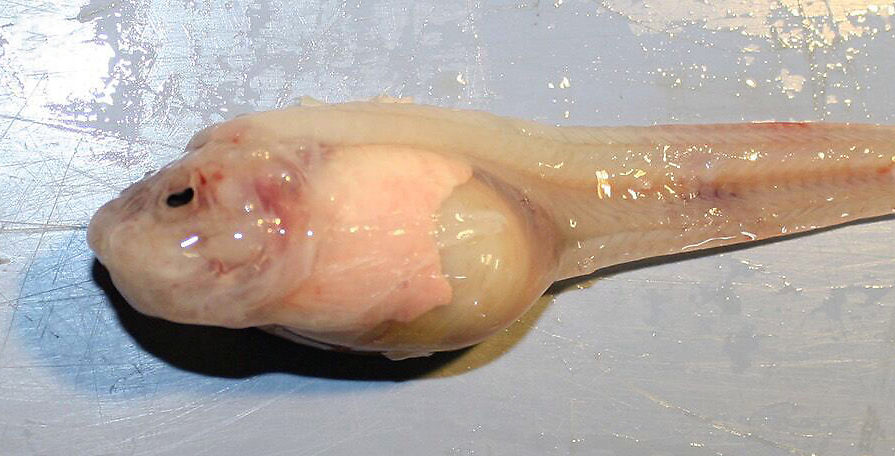
Every year scientists discover roughly 18,000 new species of microbes, plants, animals, and even some extinct creatures, which means it takes a pretty special discovery for one of these species to make it onto a Top 10 list.
Yet every year taxonomists from the College of Environmental Science and Forestry manage to select the best of the new crew, releasing their selections on May 23 in honour of the 1707 birth of the “father of modern taxonomy,” Carolus Linnaeus.
“I’m constantly amazed at how many new species show up and the range of things that are discovered,” the group’s president, Quentin Wheeler, said in a news release. “So many of these species — if we don’t find them, name them and describe them now — will be lost forever. And yet they can teach us so much about the intricacies of ecosystems and the details of evolutionary history. Each of them has found a way to survive against the odds of changing competition, climate and environmental conditions. So each can teach us something really worth knowing as we face an uncertain environmental future ourselves.”
So what topped the list this year? Here are seven of the group’s best discoveries and where they were found.
Baffling Beetle (Nymphister Kronaueri)

These hitchhiking beetles were discovered in Costa Rica, where they live among one specific type of army ant. These ants spend two to three weeks raiding and travelling, before buckling down in one location for a couple of weeks. While the beetles are capable of moving around and feeding during this time, when the ants travel the beetles use their mouths to grab onto the skinny part of one of the ant’s abdomens and hitch a ride. The really cool part? These beetles are actually the same size, shape and colour as the ants’ stomachs, making them hard to detect.
Heterotrophic Flower (Sciaphila Sugimotoi)

This fungus-eating flower was discovered in Japan, where it depends on a stable ecosystem for survival. A part of the Triuridaceae family, a.k.a. plants that have a symbiotic relationship with the fungus on which they get their sustenance, these particular flowers are classified as critically endangered because they’ve only been found in two locations on Japan’s Ishigaki Island.
Swire’s Snailfish (Pseudoliparis Swirei)

This slimey, tadpole-shaped fish certainly invokes the image of a snail, but it would probably be a lot harder to catch. This particular species of snailfish (there are roughly 400 of them) was discovered in the depths of the Western Pacific Ocean, where it was hanging out somewhere between 6,898 and 7,966 meters down. Talk about a deep dive.
Volcanic Bacterium (Thiolava Veneris)

More than half a decade ago when the submarine volcano Togoro erupted off the coast of the Canary Islands, most of the existing marine ecosystem was wiped out. Fast forward to today and scientists have discovered a new species of proteobacteria that is producing long, hair-like structures. Basically those structures have made a big, white mat, which will now allow the development of early-stage ecosystems. Natural selection indeed.
Marsupial Lion (Wakaleo Schouteni)

This discovery is a bit late, about 23 million years late, to be exact. Still thanks to a fossil discovery in Queensland we now know that a marsupial lion — which weighed in around 50 pounds, hung out in trees, and probably followed an omnivore diet — once roamed the planet. Scientists believe the animal increased in size over time in response to larger prey, but that didn’t matter because obviously it didn’t survive in the end.
Protist (Ancoracysta Twista)

It isn’t often that an entire new species is discovered in an aquarium, but that’s exactly what happened in San Diego when this single-cell protist was discovered. Scientists believe the thing may belong to an early lineage of Eukaryotes (organisms with cells in which the genetic material is contained in a membrane-bound nucleus), but they’re having trouble figuring out its nearest relatives. For now, we know it’s a predatory flagellate that feeds on other protists. Yum.
Amphipod (Epimeria Quasimodo)

Thanks to the hunchbacked shape of this new two-inch long amphipod, scientists have named it after the protagonist in Victor Hugo’s The Hunchback of Notre Dame. The species was discovered in the Antarctic Ocean, where it was one of 26 new overall amphipod species of its genus that were discovered. What makes this one particularly cool is that its crested adornments look a bit like a dragon’s. The only difference? These creatures are 100 per cent less mythical.
